Similar Posts
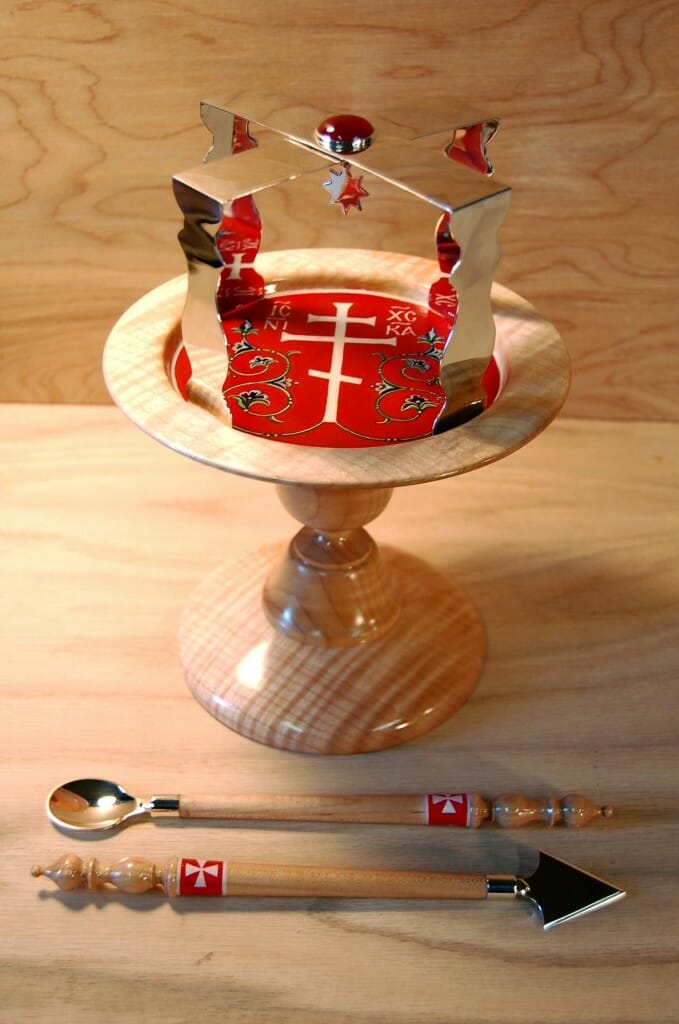
Painted wooden diskos, spear, and spoon, with sterling silver asterisk and other mounts. Designed by the author and sold through New World Byzantine Studios.
Historically in the Orthodox world, it must have been very common for chalice sets to be made of wood. Particularly in Russia, village churches would not have been able to afford vessels of fine metal, and essentially everything in an Old Russian village was made of wood. Little survives of the simple ecclesiastical furnishings and implements from those villages, but a few wooden chalices from the 17th-century remain in Russia. They are very finely and delicately turned wood and are painted with inscriptions and icons.
I was commissioned to provide a wooden chalice set for Holy Trinity Orthodox Church in Stroudsburg, PA. I researched the surviving historical examples, and developed my own design. In a way, it is a hybrid of the old village chalices and a more modern chalice set. Specifically, the chalice is quite tall (14”) and it has a sterling silver cup to serve as a lining. I found no examples of a historical wooden diskos, spear, or spoon, so I designed these parts as seemed appropriate to match the chalice.
I had the wooden parts turned from instrument-grade tiger maple by a master wood turner. The silver parts were made to my specifications by two specialized silversmiths. The cost and technical complexities of the silver parts were considerable, and left me appreciating the simplicity of the all-wood construction of the old chalices.
The painting on the historic chalices is particularly interesting in that the iconography is painted directly on the wood without gesso. This allows the wood to show through as the background around the painted areas. This technique is markedly different than the usual process of painting icons on a gessoed board. There must have been many small implements beautified in this way in Old Russia. It is an iconographic technique that is now quite forgotten, though the basic idea survives in plenty of painted-wood folk-crafts made in Russia today. (I imagine that iconography and decorative folk-art painting were probably closely allied in a 17th-century village, though they are unfortunately practiced quite apart nowadays.)
I sent the wooden parts to iconographer Heather MacKean who was able to paint directly on the wood with great success. She used a mixture of icons, inscriptions, and decorative crosses and created an attractive balance of painted areas and unpainted wood. A typical linseed oil varnish would not be nearly durable enough for this application. Instead, we used a traditional furniture varnish made from oils and tree resins. It is very clear and hard enough to withstand regular handling.
All that remained was to install the silver parts. The spear and spoon tips are epoxied into a tiny mortise in the end of the wood handle. The joint is covered by a silver ferrule. The chalice liner has a screw soldered to the bottom so it can be unscrewed from the wood for cleaning. The asterisk is constructed with a pivot from which hangs a traditional star representing the star of Bethlehem. The top is ornamented with a carnelian gemstone.
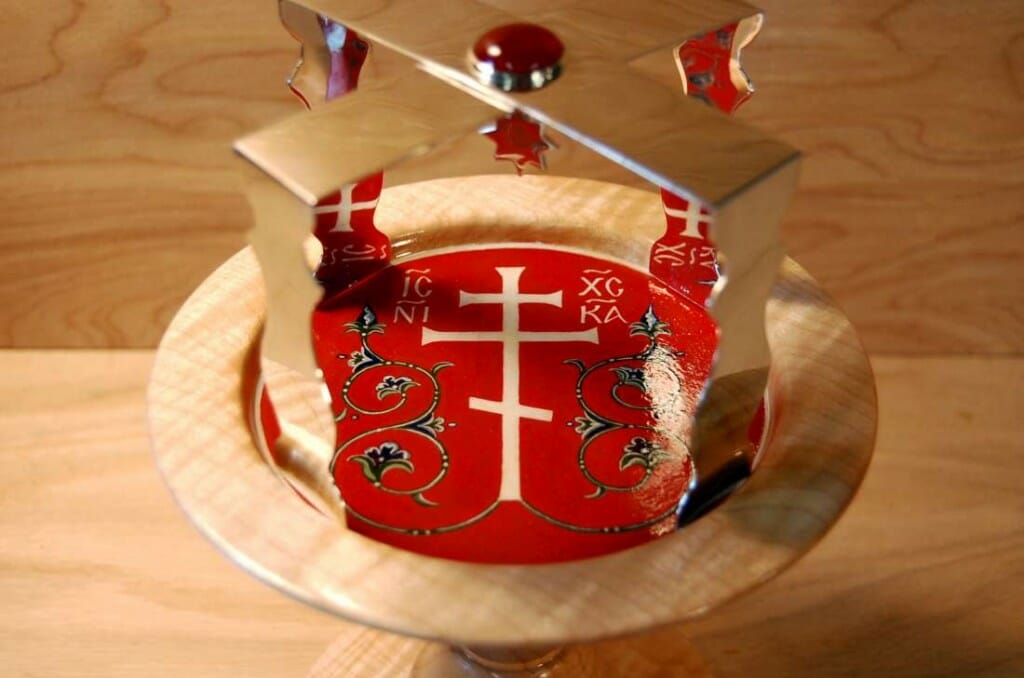
The cross painted on the diskos is modeled on a engraving from the base of the 12th-century Great Zion of Novgorod. The gemstone on top of the asterisk is a carnelian.

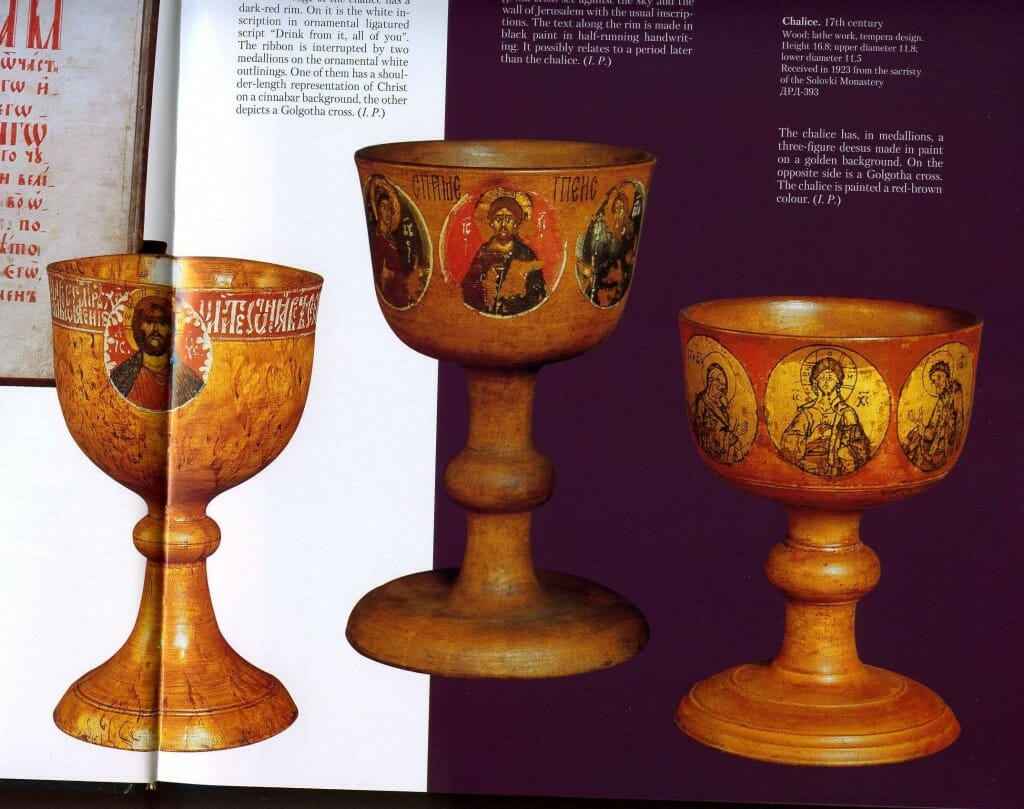
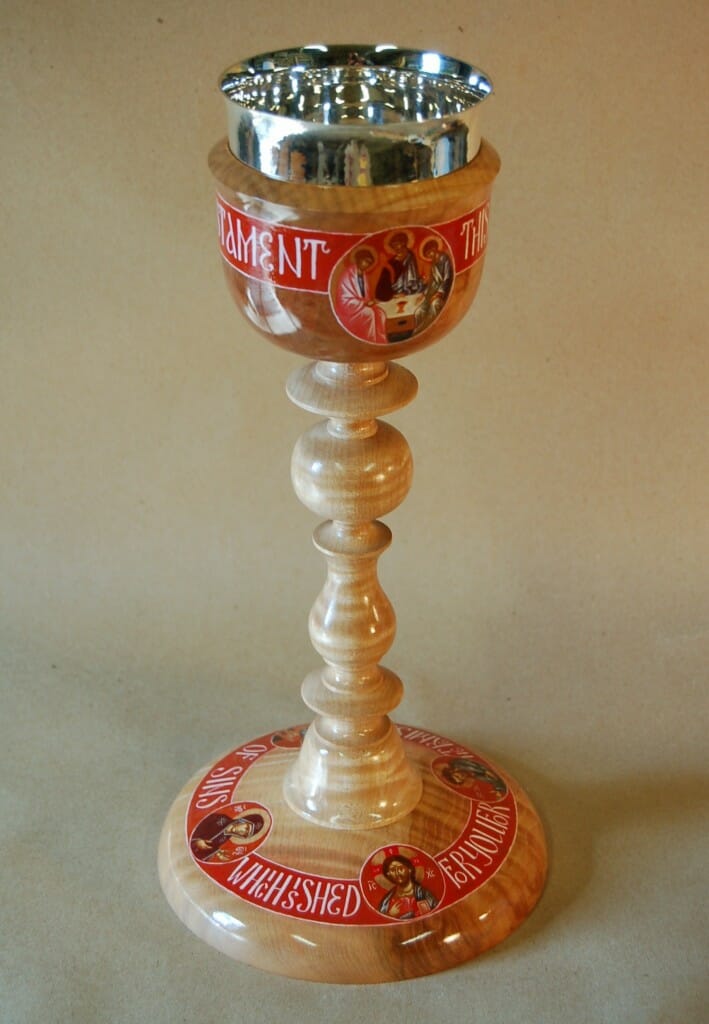
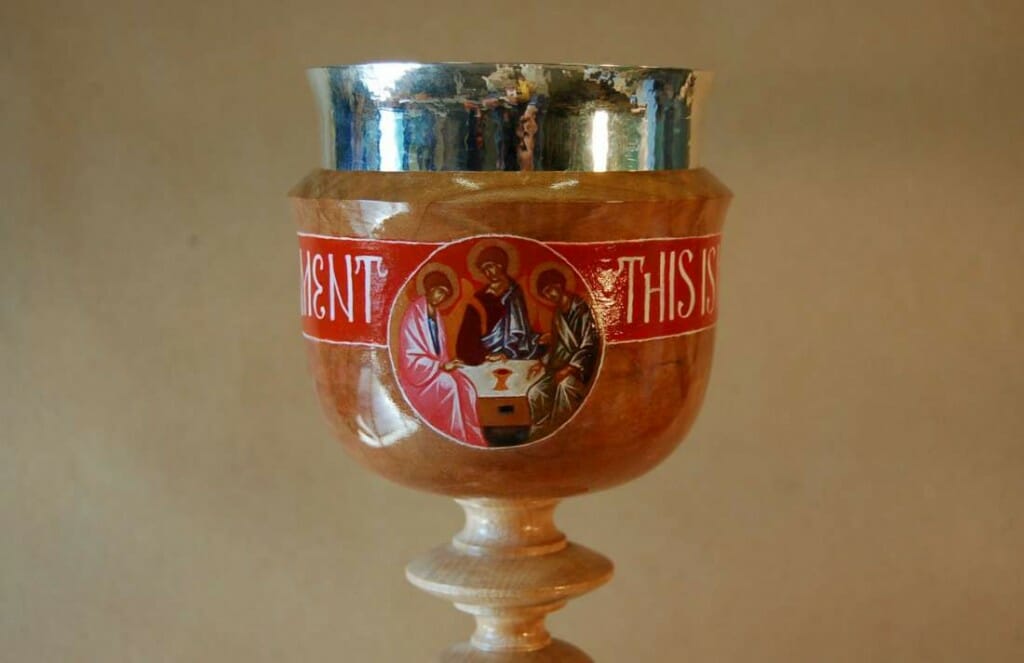
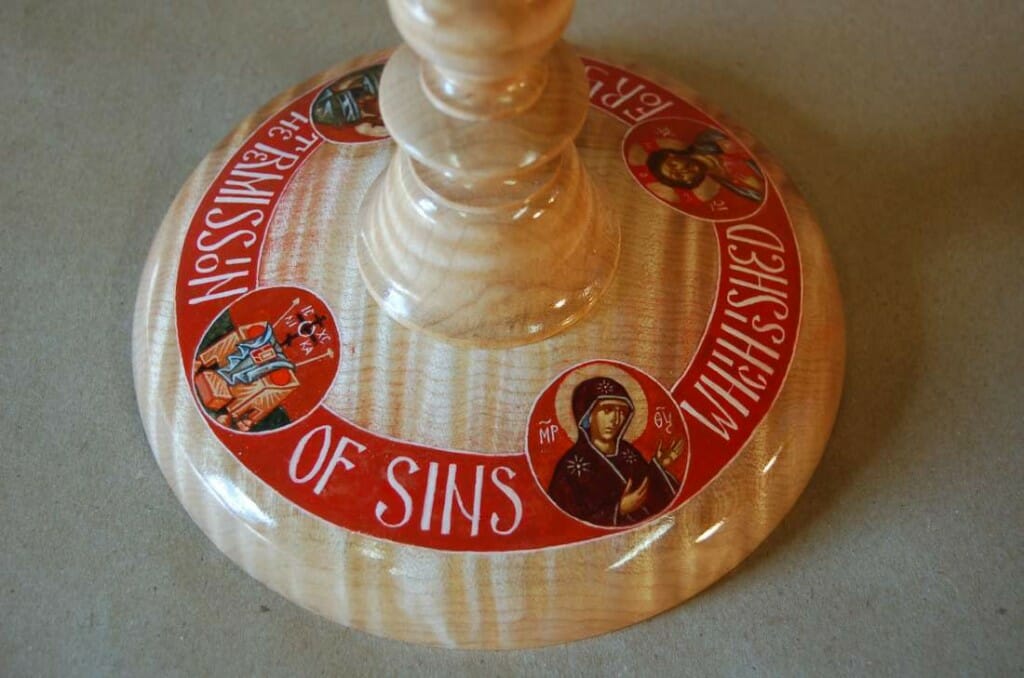
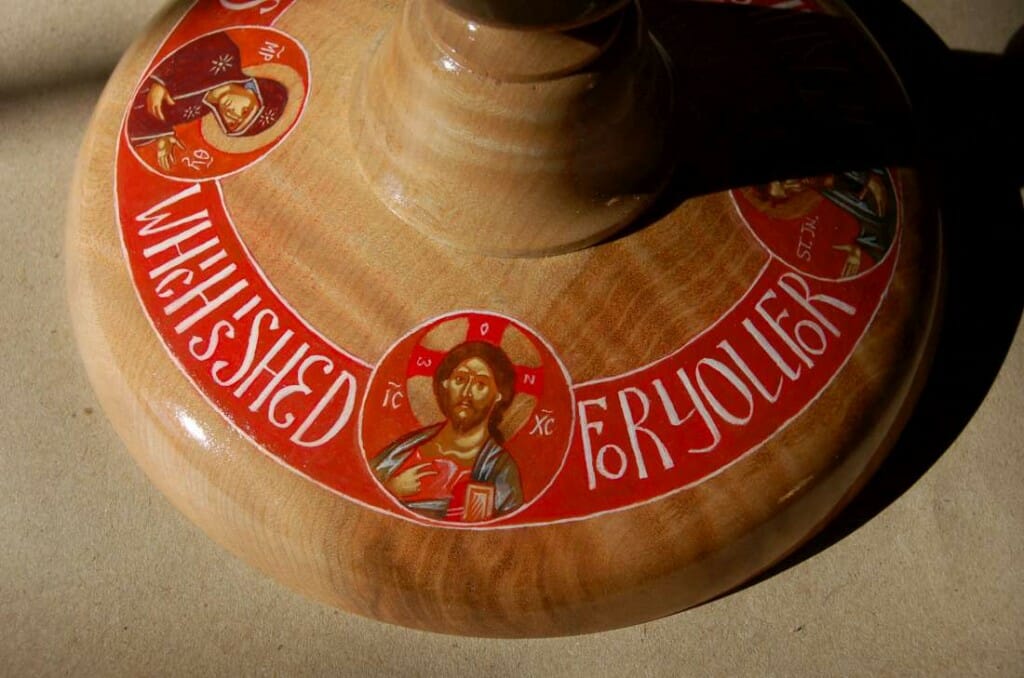
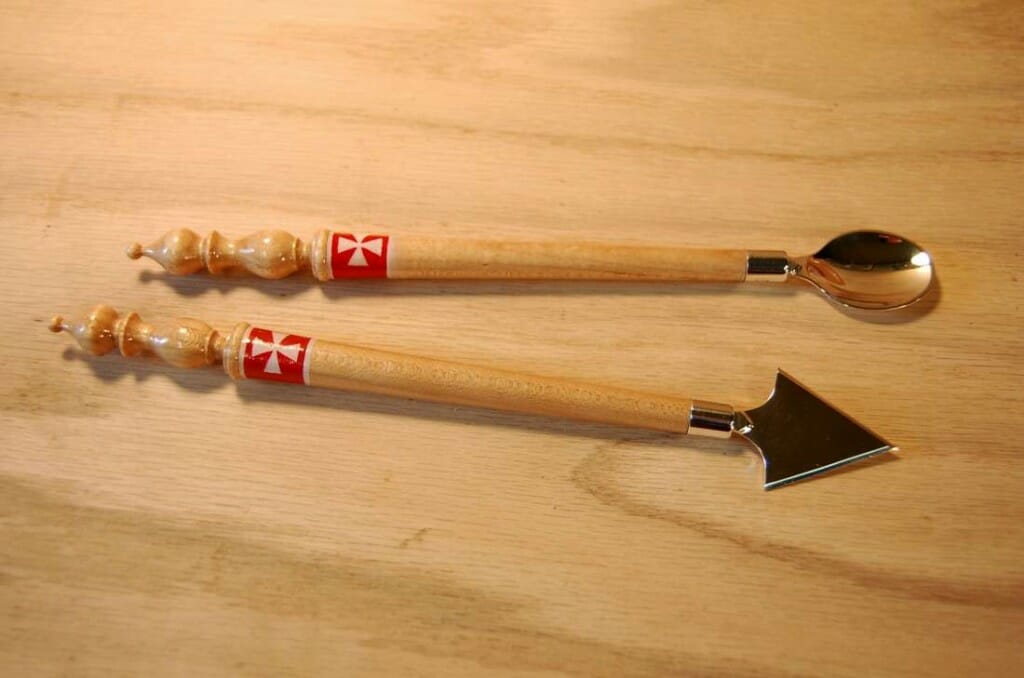
The whole set turned out beautifully. The precision of the turning is very impressive. The design on the diskos stands out to me. It is very bold and the red-black-white contrast with its stark white cross give an almost modern feeling set against the more stylish ornaments. Tradition without nostalgia! Congratulations. I will be curious to see how the paint will fare on the diskos with regular use.
This is beautiful. What elegance! The touches are phenomenal — wood showing through the halo, the red paint color, wooden handles on the spoon with marking, and so forth. Clearly a lot of thought went into it and the final production is just superb.
I never knew that chalices could be made out of wood.